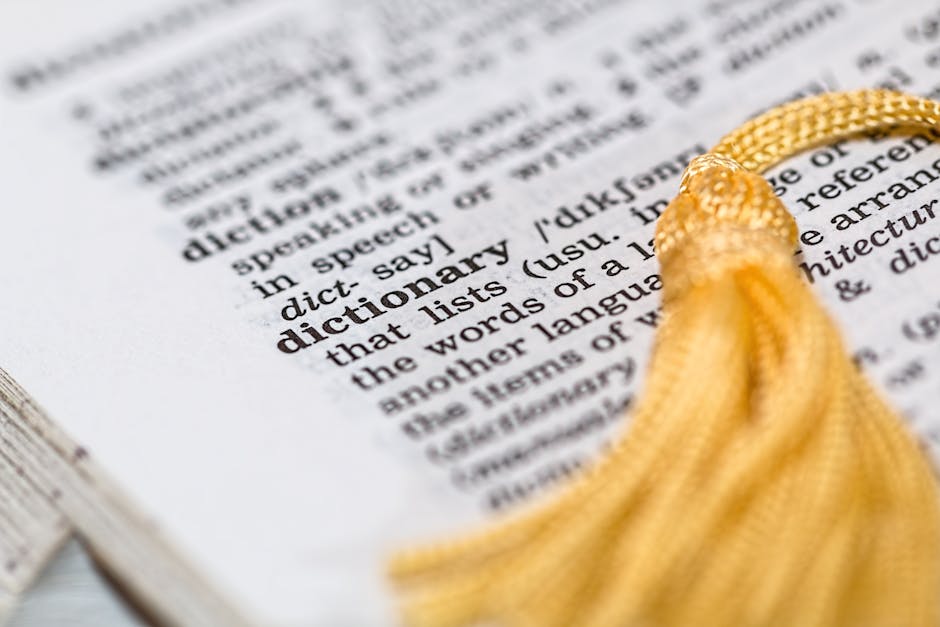Yorkshire’s Heritage and AI: Preserving Culture With Innovation
You might think Yorkshire’s rich tapestry of history belongs only in dusty archives, but here’s a twist: AI’s stepping in.
From digitising old manuscripts to predicting conservation needs, technology’s knitting past and present together.
You’ll explore how machine learning breathes new life into ancient dialects and how virtual reality can walk you through a mediaeval abbey.
Dive into this cutting-edge fusion where Yorkshire’s heritage meets artificial intelligence, preserving culture with a digital heartbeat.
Key Takeaways
- Digitisation and AI play a crucial role in preserving Yorkshire’s rich historical records and artefacts.
- AI algorithms enhance the efficiency and interpretation of archaeological data, allowing for deeper insights into Yorkshire’s cultural heritage.
- Machine learning captures and categorises Yorkshire’s unique dialects and linguistic nuances, aiding in the preservation of the region’s language heritage.
- Predictive conservation and timely interventions based on historical and real-time data help protect Yorkshire’s heritage from deterioration and evolving risks.
Digitising Historical Records

You’ll discover that the digitisation of Yorkshire’s historical records is a pivotal step in safeguarding the region’s rich past. Through the meticulous process of virtual restoration, fragile pages and artefacts are reborn into a digital format, immune to the ravages of time and physical decay. This technological resurrection isn’t only about preservation but also about accessibility.
By applying cutting-edge genealogy algorithms, the amassed data transforms into an interconnected web of historical insights, offering you a personalised voyage through your ancestry with unprecedented precision.
As you delve deeper, you’ll appreciate how digital archiving provides a robust foundation for research. High-resolution imaging and metadata tagging ensure that every detail, from the quirk of a handwritten note to the watermark on a centuries-old map, is captured and categorised. This level of granularity is essential for scholars, historians, and casual enthusiasts alike, as it enables complex queries and data analysis that were previously unthinkable.
In essence, Yorkshire’s leap into the digital era marks a profound shift in how heritage is preserved and studied. It’s an endeavour that not only honours the legacy of the past but also empowers future generations with the tools to explore their cultural inheritance with the clarity and depth it deserves.
AI in Archaeological Discoveries

Building on this digital foundation, you now enter the realm of AI-enhanced archaeology, where artificial intelligence is revolutionising the discovery and analysis of ancient artefacts buried beneath Yorkshire’s landscapes. AI technologies aren’t just auxiliary tools; they’re becoming central to the way you unearth and understand the past. Here’s how AI is transforming the field:
-
Predictive Modelling: AI algorithms can analyse vast amounts of geographical data to predict where undiscovered archaeological sites might be located.
-
Artefact Analysis: Sophisticated image recognition software assists in identifying and categorising artefacts faster than ever before, sometimes even on-site.
-
Excavation Robotics: Semi-autonomous robots, guided by AI, perform delicate excavations, reducing the risk of damaging priceless historical finds.
-
Data Synthesis: AI excels at synthesising complex data from various sources, offering comprehensive insights into the cultural and historical context of discoveries.
You’re witnessing a paradigm shift where AI’s meticulous artefact analysis and the precision of excavation robotics are indispensable. These innovations aren’t just enhancing efficiency; they’re allowing for a more nuanced interpretation of archaeological data.
As you delve deeper into Yorkshire’s heritage, AI stands as a tireless partner, revealing the echoes of ancient civilisations with unprecedented clarity and depth.
Interactive Heritage Experiences

As you explore the digitised realms of Yorkshire’s past, AI now brings history to life through interactive heritage experiences that engage your senses and curiosity. Imagine donning a virtual reality headset and finding yourself walking the cobblestone streets of historic York, surrounded by the sights and sounds of mediaeval life. Here, cultural gamification isn’t just a buzzword—it’s the cornerstone of an immersive learning environment.
Virtual reality (VR) technology, empowered by AI, creates high-fidelity simulations where you can interact with historical figures, participate in ancient crafts, or witness significant events firsthand. This isn’t passive observation; it’s an active exploration where every decision you make alters the narrative, giving you a personalised glimpse into the past.
Cultural gamification leverages this interactivity, transforming education into an inthralling game. By completing quests and solving puzzles rooted in authentic historical contexts, you’re not just having fun—you’re also absorbing complex cultural knowledge. This innovative approach ensures that Yorkshire’s rich heritage isn’t merely observed but experienced and remembered.
As AI continues to refine the authenticity of these simulations, the line between the present and the past blurs, setting the stage for even more advanced applications of technology in heritage preservation. Next, we’ll delve into how machine learning aids in safeguarding Yorkshire’s linguistic heritage, ensuring that its unique dialects and languages aren’t lost to time.
Machine Learning and Language Preservation

How can machine learning contribute to the conservation of Yorkshire’s distinctive dialects and linguistic nuances? By employing advanced language algorithms, these systems can meticulously analyse and capture the essence of regional speech patterns. Here’s how:
-
Data Collection: Machine learning algorithms require vast datasets. In Yorkshire, you can gather voice recordings from local speakers, ensuring a rich repository of dialect variations.
-
Dialect Analysis: Algorithms can dissect these recordings to identify and categorise unique phonetic characteristics, intonation, and vernacular specific to Yorkshire dialects.
-
Predictive Modelling: Once the system understands the dialect’s intricacies, it can predict and replicate these patterns, aiding in the creation of digital resources that speak the dialect fluently.
-
Revitalisation Tools: These models aren’t just archival; they’re interactive. They can be integrated into educational software, providing an immersive learning experience for those keen on preserving or learning Yorkshire’s linguistic heritage.
Such technical endeavours not only capture the dialect for posterity but also offer a living bridge to the past. You’re not just preserving a way of speaking; you’re keeping a culture vibrantly alive.
Through the synergy of machine learning and language preservation, Yorkshire’s voice will continue to echo, undiminished, into the future.
Predictive Conservation Strategies

You’ll find that predictive conservation strategies take machine learning a step further, using historical and real-time data to anticipate and safeguard Yorkshire’s cultural heritage against potential threats. Advanced algorithms integrate climate modelling to project environmental changes with startling accuracy. This foresight enables custodians to pre-emptively address issues such as erosion or flooding, which are exacerbated by shifting weather patterns.
These AI-driven systems don’t stop at atmospheric analysis. Material analysis is equally critical, as it provides insights into the durability and longevity of physical artefacts. By understanding the composition and decay rates of materials like stone from Yorkshire’s historical buildings or the fibres in antique textiles, AI can predict when and how these materials may fail. This allows for timely interventions, such as climate-controlled environments or the application of preservatives, to prevent deterioration.
In your role as a conservator, you’d leverage these tools to create a dynamic preservation plan, one that adapts to the evolving landscape of risks. It’s an articulate dance between technology and tradition, where the nuanced understanding of Yorkshire’s past informs the strategies to protect its future. With predictive conservation, you’re not just preserving history; you’re ensuring its resilience.
Frequently Asked Questions
How Is the Local Population of Yorkshire Involved in the Ai-Driven Heritage Preservation Projects, and What Are Their Sentiments Towards These Technological Interventions?
You’re curious about community engagement in AI heritage projects. Locals are collaborating, providing insights that shape technology. Their technological acceptance varies, but many appreciate how these tools offer new ways to experience their history.
Are There Ethical Considerations Being Taken Into Account When Using AI to Interpret or Represent Cultural Heritage, Especially Regarding the Potential for Cultural Misrepresentation?
You’re right to consider ethical implications of AI in cultural heritage. Cultural sensitivity and awareness of algorithmic bias are crucial to prevent misrepresenting traditions and histories during digital preservation and interpretation efforts.
How Is the Authenticity of Heritage Experiences MAIntAIned When Integrating AI and Virtual Reality Into Their Presentation?
To maintain digital authenticity in heritage experiences, you’ll need to rigorously validate AI outputs and craft immersive storytelling that respects historical accuracy while engagingly conveying the essence of the past.
What Measures Are in Place to Ensure the Cybersecurity of Digital Archives Containing Sensitive Information About Yorkshire’s Heritage?
You’re navigating a digital fortress where data encryption and access control are the guards, ensuring that sensitive archives remain shielded from prying eyes, upholding the integrity of the information within.
How Does the Use of AI in Heritage Preservation in Yorkshire Aline With SustAInable Tourism Goals, and What Impact Does It Have on the Local Economy?
You’ll find that AI’s role in cultural analytics bolsters sustainable tourism by minimising environmental impacts while fostering economic revitalisation through increased visitor engagement and spending in local businesses around heritage sites.
Conclusion
You’ve witnessed how AI breathes new life into Yorkshire’s storeyed past. By digitising archives, unearthing archaeological secrets, and creating immersive experiences, technology becomes a time machine.
It safeguards dialects with machine learning and envisions futures with predictive analytics. As you don your digital archeologist’s hat, remember, you’re not just preserving history, you’re shaping a legacy with silicon chisels.
Here, the echo of ancient voices meets the cadence of algorithms—where history is written not in ink, but in code.
Contact us to discuss our services now!
